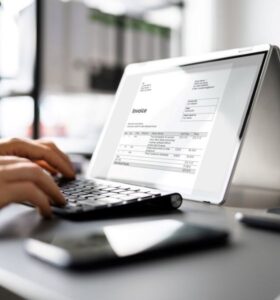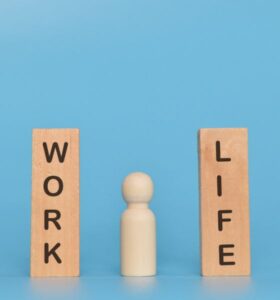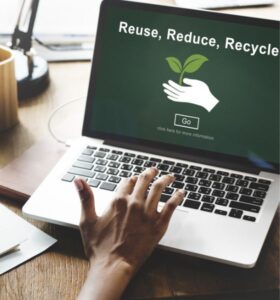“Have you considered the preferred method of communication used in your company?” It’s neither WhatsApp messages nor letters but rather emails that make business communication possible. Unfortunately, many pupils are not aware of how to write proper business email format.
Remember that whatever email you send to your boss, HR, manager, or clients should be clear, direct, and easy to read, as it significantly impacts them. However, an improper email can have a negative impact.
An email has a unique style and structure, so we’ll discuss the proper business email format.
So, let’s get started!
Best and Effective Business Email Format
As you know, a well-written email can positively impact whoever receives it. Therefore, knowing how to write the best email is essential. In this regard, here are five essential components that can help you write an effective and clear business email format.
Subject Line
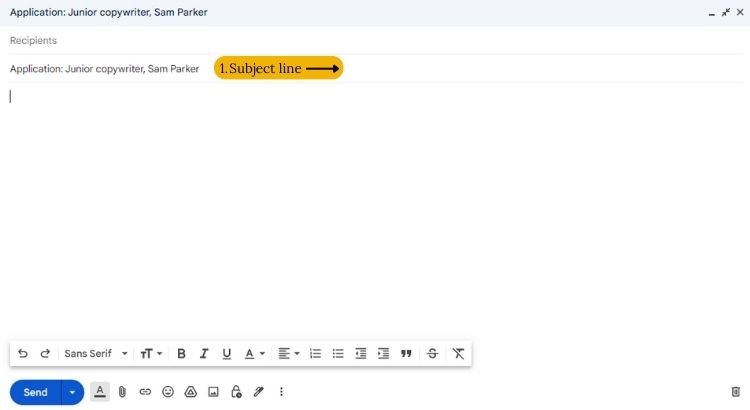
The subject line is the first part of the business email format, so it should be short, precise, and define the main purpose of the email. If the subject line needs to be more specific, you might lose the recipients’ attention, so make sure it is short and to the point.
Salutation
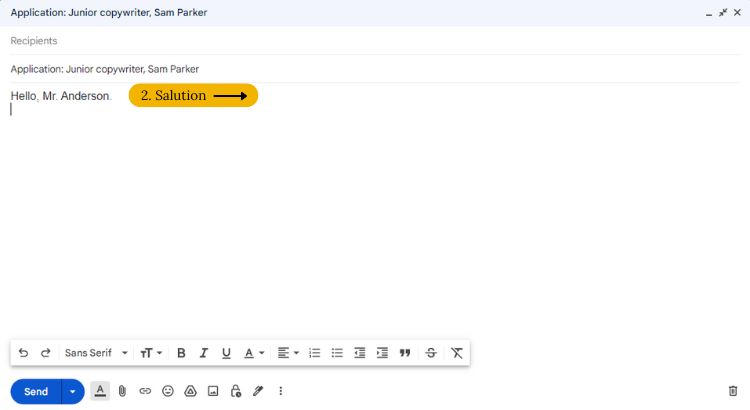
The second part of a business email is the salutation or greeting. For example, “Hello,” “Hi,” “Dear,” etc. The salutation should be correct and appropriate to the recipient. First, you must identify the recipient – a friend, family member, business client, colleague, or boss – and choose your salutation accordingly. Always be respectful and professional in your salutation.
Opening Sentence
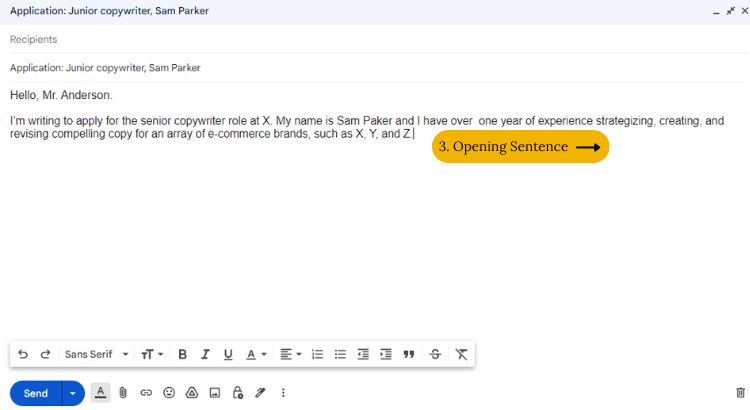
“The first sentence” is known as the opening of the email. The sentence acknowledges the reader and sets the tone for the rest of the email. The opening sentence should be polite and concise, and it does not have to be too long.
Body of The Email
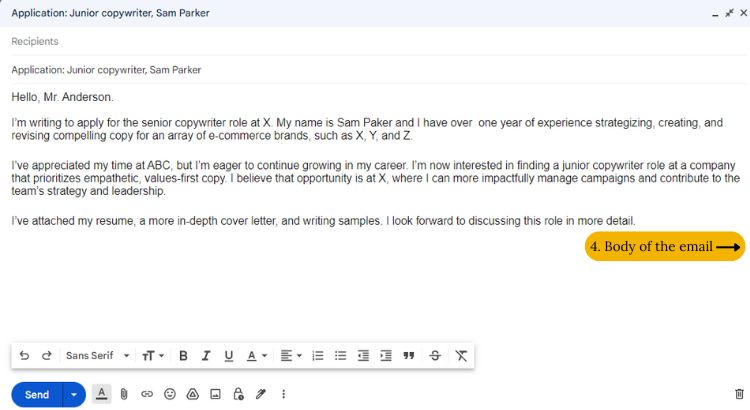
“The body of the email is the main component of the business email format. To make it simple for the reader to get the objective of your email, start with your main point and any relevant information.
Here are two crucial ideas you must keep in mind as you define the email’s body:
- If you require a prompt response from the reader, indicate whether you would request a call or an email answer.
- If you have attached an important file to your email, mention it by saying, “I have attached the file of [insert file content].”
Closing of The Email

The end of the email is the “closing sentence or any complimentary words or clause.” The closing may be formal or informal; it depends on whoever you send the email to, so your closing should be appropriate.
Signature

The last component of the business email is the signature. It should include your full name, job title, website, contact number, business address, or any important links. Make sure that your signature block is error-free.
Some Essential Tips to Write a Professional Email
Professional emails are usually sent to managers, professors, bosses, directors, and other formal recipients. Therefore, use formal language and select your words wisely.
1. The email address should be accurate.
2. If you email multiple recipients, use the CC (carbon copy) option and add their email addresses. If you don’t want others to know who received the email, you can use the BCC (blind carbon copy) option to keep it private.
3. When writing a professional email, The salutation should be formal and polite.
For example:
- “Good morning/afternoon/evening, Mr. (last name)”
- “Dear Mr. (Last name)”
- Always use “Ms.” instead of “Mrs.” for female clients or professionals.
- “Hello/Hi, (Last name)”
4. If you are unaware of someone’s name, you can use their job title instead. “Dear Manager,” “Dear Doctor,” “Dear Boss,”
5. In professional emails, the closing should be friendly, so you may write something like, “If you require any information, please don’t hesitate to ask.”
6. Your full name, title, website, and phone number must be precise in the signature area, along with any other relevant details.
You must maintain a professional tone throughout the entirety of the email.
Formal VS Informal Emails
- Formal emails are typically for clients, managers, colleagues, and recipients we don’t know well. However, informal emails are for people we know well, like friends and family.
- In formal emails, always use a colon (:) after the salutation, such as “Dear General Manager:” In informal emails, use a comma (,) after the salutation, such as “Hello friend,”
- In formal emails, you should be careful about what you write because you don’t know the recipient well. But in informal emails, you can write whatever you want.
- In both formal and informal emails, make sure to place an empty line between every component and each paragraph of the body of the email.
- In formal emails, you cannot use emoji’s. However, in informal emails, you can use emoji’s.
Avoid These Mistakes to Write a Business Email Format
In the salutation, never use “Dear Sir/Madam” both simultaneously. If you’re not sure to whom you are sending the email, mention the designation of the recipient.
Avoid making grammatical errors and spelling mistakes in business emails.
Don’t write a poor subject line; choose your subject wisely, as the subject line defines the main purpose of the email.
The business email should not look too vague and boring, as the reader loses interest if it is too long.
Avoid repetition. Your message should be complete and understandable.
If you attach a file to the business email, edit the file title clearly so the reader can easily understand the file.
Check everything before pressing the send button. Always proofread! Ensure that your email is 100% accurate.
Best Professional Business Email Address Format and Example
The most recommended and innovative professional business email address format is [email protected].
However, you can also write your professional business email address format in other ways, such as:
Like:
The imaginary names are Clara calamai and Sam parker. Some best examples of professional business email addresses are:
Short Business Email Format Template
Here is a template for a business email format that you can use:
Subject: [name of a lead company or name of your company]
Salutation: Good morning/Dear [Recipient name]
[Opening]
[Intro] Provide a short, formal introduction and remind the reader of how you met. Then, state the purpose of your email. [Call to Action] Also, if you want a prompt response, request that the recipient take action, e.g., “I am eager to receive your email reply.”
[Closing]
[Signature]
Conclusion
Business email Is the core of written communication; business emails must follow an accurate and efficient format. In addition, you can utilize an online grammar checker to rectify any errors in your email. I hope this blog post has helped clarify the format and etiquette of a business email so you can create one that gets the main idea clearly. Please feel free to ask any questions you may have related to the format of business emails.

